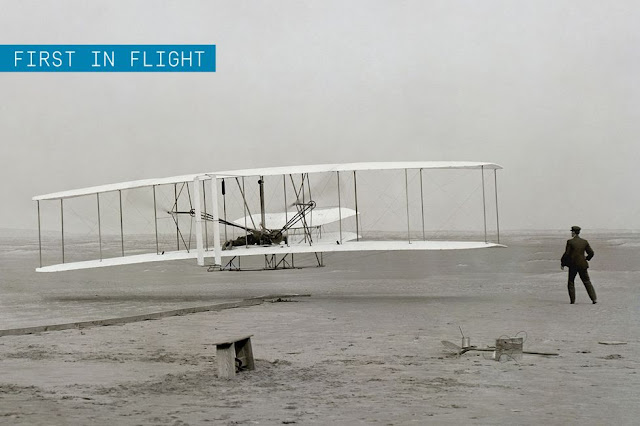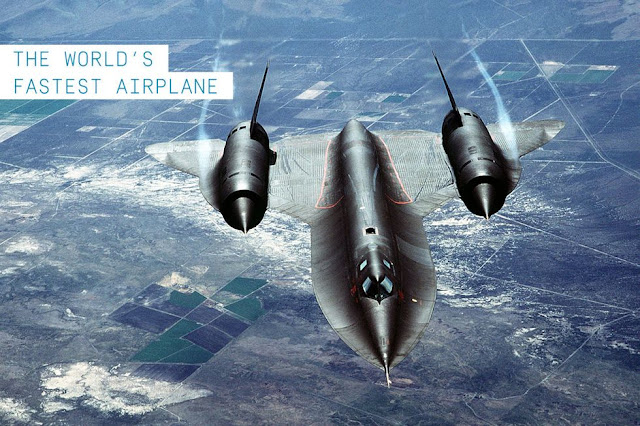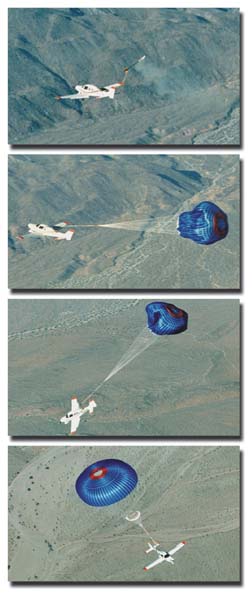These aircraft have become legends and have defined our aerospace age.
Each one of these famous planes listed below has left a lasting impression on the aviation industry and on each one of us.
My personal favorite the the SR71 Black Bird.
We have an entire post on this phenomenal aircraft - check the link below.
Lockheed SR71
So let's get underway and in no specific order.
ALL LINKS ARE HIGHLIGHTED IN BLUE
Wright Flyer or Kitty Hawk.
Designed and built by the Wright brothers, they flew it four times on December 17, 1903.
With this brave step, we can all fly today.
The aircraft was resorted and on display in 1995.
Boeing 787 Dreamliner.
The Dreamliner is Boeing's first ever airliner constructed primarily out of composite materials. The fuselage is assembled by joining large composite barrel sections, as opposed to the traditional method of attaching multiple aluminum sections with thousands of fasteners.
A fly-by-wire flight system replaces a traditional hydraulic/bleed air power systems in favor of electric servos to manipulate control surfaces.
Blériot XI
The Blériot XI is a French aircraft of the pioneer era of aviation. The first example was used by Louis Blériot to make the first flight across the English Channel in a heavier-than-air aircraft, on 25 July 1909.
Demand for his design exploded and many aviation pioneers of the day flew variations of his craft. That included Clyde Cessna, the founder of the Cessna Aircraft Corporation, the company that has sold more single-engine aircraft than any other company.
Supermarine Spitfire
The Spitfire was the only British fighter in continuous production throughout the entire Second World War. It became the backbone of the Royal Air Force Fighter Command and was most noted for beating back the German Luftwaffe during the Battle of Britain.
The distinct elliptical wings were designed to have the thinnest possible cross section, which resulted in higher speeds than many other fighters of the day.
Originally fitted with a 1,000-hp Rolls-Royce Merlin V-12 engine, the Spitfire was later adapted to handle the 2,300 horses cranked out by the massive Griffon engine also built by Rolls-Royce.
Rolls-Royce Merlin V-12 engine
FIVE LITTLE-KNOWN SPITFIRE FACTS
Lockheed SR-71 Blackbird
Although the Blackbird last flew in 1999, it still holds the world record for the fastest air-breathing manned airplane in history, which it first achieved in 1976. That mark has stood for nearly 40 years, and there doesn't seem to be a challenger rising anytime soon.
The Blackbird's basic stealth characteristics and ability to operate at ridiculous speeds and altitudes allowed the SR-71 to perform dangerous reconnaissance missions. If the plane ever encountered a surface-to-air missile (and it did), standard protocol was to accelerate and outrace any threat.
Secrets of the world’s fastest plane
The SR22 took the general aviation world by storm in 2001, and has been the best-selling single-engine four-seat aircraft for more than a decade. With its composite construction and armed with an airframe ballistic parachute, this sleek Cirrus gave even new pilots the confidence to take the controls of such a high-performance machine.
Ryan Campbell flew the SR22 in 2013 when he became the youngest pilot to circle the globe solo. Meanwhile, the parachute system is credited with saving more than 100 lives.
Cirrus Airframe Parachute System
Learjet 23
Back in 1960, Bill Lear moved to Switzerland from his home in California to form the Swiss American Aviation Corporation, with the intention of redesigning the FFA P-16 ground attack fighter prototype. It failed, and Switzerland eventually cancelled its order for the SAAC-23 ExecutJet. But that didn't deter Lear, who built on its potential and moved back to the U.S. to manufacture his own executive version.
Lear's insight that there was an emerging market for executive business travel led to the development of the Learjet 23, which marked the dawn of a new world of fast and efficient business aircraft.
With a new name and a new country, Learjet pumped out 104 aircraft from its facility in Kansas in just two years of production, ending in 1966. The plane could carry eight passengers at 560 mph and became the first mass-produced business jet. It was so popular that the term Learjet became synonymous with the idea of a biz jet.
Performance
- Maximum speed: 561 mph (903 km/h, 487 kn) at 24,000 ft (7,300 m)
- Maximum speed: Mach 0.82
- Cruise speed: 518 mph (834 km/h, 450 kn) at 40,000 ft (12,000 m)
- Stall speed: 104 mph (167 km/h, 90 kn) wheels and flaps down
- Range: 1,830 mi (2,950 km, 1,590 nmi) max fuel at 485 mph (781 km/h; 421 kn) and 40,000 ft (12,000 m)
- Service ceiling: 45,000 ft (14,000 m)
- Rate of climb: 6,900 ft/min (35 m/s)
LEARJET 24 - IMPRESSIVE SUCCESSOR
Lockheed C-130
This four-engine turboprop military transport built by Lockheed Martin has been in continuous production longer than any other military aircraft. In its 50 years of service it has earned the reputation at being the most flexible and versatile workhorse of the armed forces.
Originally designed as a troop and cargo transport aircraft that could operate on unimproved runways, the C-130 has found its way into serving as gunship as well as a platform for research, search and rescue, aerial refueling, and many other roles. More than 40 variations of the venerable plane have been delivered to more than 70 nations since its first flight in 1954. In sum, the C-130 has logged more than 1.2 million hours in the air.
It can be said without fear of contradiction that the C-130 Hercules is one of the most important aircraft in aviation history.
Douglas DC-3
It wasn't the first airliner, but the DC-3 revolutionized the way Americans think about air travel. Of any single aircraft, Douglas's may have had the most dramatic impact on the way we get around.
Before the arrival of the DC-3 in 1936, a cross-country flight from Los Angeles to New York required up to 15 grueling stops, airline changes, and two or three different airplanes. When the DC-3 arrived, a single plane filled with 20 of your closest friends could cross the country in about 15 hours and require only three fueling stops.
Douglas's innovations included supercharged engines, cantilevered metal wings, and retractable landing gear, all of which culminated in a passenger experience like no other.
Cabin View.
DC-3 today
Perhaps unique among prewar aircraft, the DC-3 continues to fly in active commercial and military service as of 2021, eighty six years after the type's first flight in 1935.[citation needed] There are still small operators with DC-3s in revenue service and as cargo aircraft. Current uses of the DC-3 include passenger service, aerial spraying, freight transport, military transport, missionary flying, skydiver shuttling and sightseeing. The very large number of civil and military operators of the DC-3/C-47 and related types makes a listing of all the airlines, air forces and other current operators impracticable.
A common saying among aviation enthusiasts and pilots is "the only replacement for a DC-3 is another DC-3"
The Anniversary Of The Legend Of The Skies
Cessna 172
More Cessna 172 Skyhawks have been sold than any other aircraft, period. First released in 1956, this four-seat, single-engine, high wing personal aircraft has been sold more than 43,000 times and is still in production today.
Reliable, affordable, and stable, the Skyhawk is the staple plane of flight training schools everywhere. Its modest performance and longevity creates the ideal mode of transportation for private pilots across the globe. Skyhawk's success drove the Cessna Aircraft Company to domination in the light aircraft market.
ENGINEERED FOR TRAINING. BUILT FOR ADVENTURE.
Boeing B-29 Superfortress
You know the B-29 because it delivered the final blow to Japan in WWII when it dropped the atomic bombs on Hiroshima and Nagasaki. While this dubious feat would be enough to earn the Superfortress a spot on the most important airplanes list, don't forget that this bomber featured some amazing technological advancements well ahead of its time—specifically, a clever remote firing system for the turret machine guns, dual-wheeled tricycle landing gear, and a pressurized cabin.
Years later, after new engines were added and the plane was designated the B-50, this became the first aircraft to fly around the world nonstop. It was also the mothership for many X-plane research aircraft, including Glamorous Glennis, the Bell X-1 that Chuck Yeager used to become the first to fly through the sound barrier.
Boeing B-29 Superfortress "Enola Gay"
Gulfstream G500
This private business jet, announced alongside its sister ship the G600 in fall 2014, features fly-by-wire active side-stick that provides visual and tactile feedback for the flight crew—technology previously available only for military aircraft. This feedback through the flight control stick allows both the pilot and copilot to track and feel the controls of each other and the autopilot.
Boeing 747
Having held the passenger capacity record for 37 years, the original jumbo jet is easily distinguished by the hump created by the upper deck that's usually reserved for first class passengers.
Bell X-1
This supersonic research aircraft is famous for being the first manned airplane to break the sound barrier, in 1947. It was also the first X-plane, ushering in a series of rocket-powered aircraft.
Spirit of St. Louis
The Ryan NYP, known as the "Spirit of St. Louis," carried Charles Lindbergh on his landmark 33-hour, 30-minute non-stop flight across the Atlantic Ocean from New York to Paris. Lindbergh, who was relatively unknown in the aviation community at the time, was unable to procure the funds to acquire a suitable existing aircraft design. Eventually, the fabric-covered, single-seat, single-engine aircraft was designed jointly between Lindbergh and the Ryan Aircraft Company. Having completed only a small series of test flights and a trip from San Diego to St. Louis, Lindbergh would arrive at Roosevelt Field in New York just 10 days before he would take off for Paris.
Rutan VariEze
Designed by famed aerospace engineer Burt Rutan, this unique composite aircraft became wildly popular among amateur aircraft builders because of its aerodynamic resistance to spins, its exotic looks, and its simplicity of design. In a departure from the traditional vertical and horizontal tail configuration similar to the tail feathers of an arrow, the VariEze received a Rutan hallmark: a smaller forewing or canard and large winglets at the tips of the larger main rear wing. Thousands of plans were sold and this became the most built kit plane of its time.
The success of this aircraft launched Rutan's career, resulting in the construction of dozens of aircraft, five of which reside in the Smithsonian National Air And Space Museum. One of these includes the SpaceShipOne, which became the first private aircraft to go to suborbital space and win the Ansari X-prize in 2004.








































